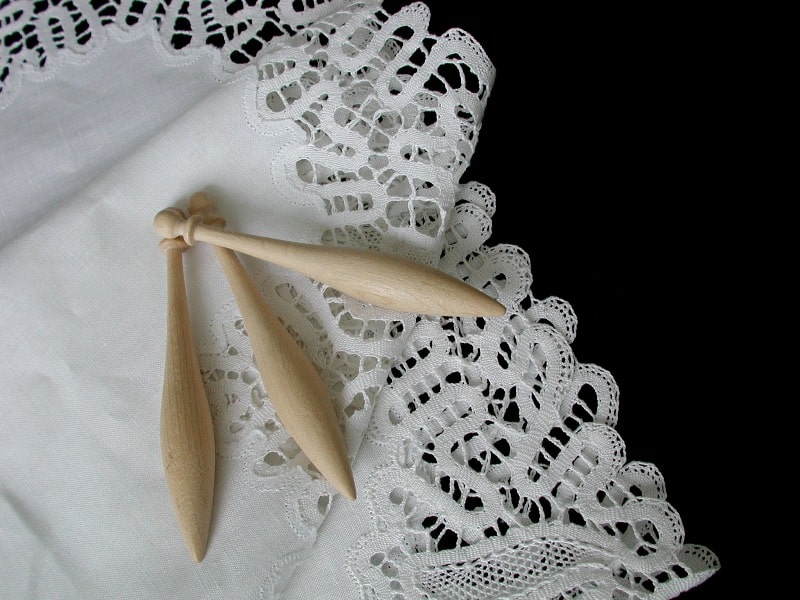Telling craftmanships is a fact to be taken very seriously. Yes, because behind the many fabrics, glasses, metals and so on, there are hidden stories of respect for the best materials and traditions. Much attention is needed to detail, dedication and hard work. When the product is finished, the artwork becomes communicative: it is able to tell a story about a specific territory and its people. Today we talk about the tombolo lace from the village of Offida, in Marche.
A BIT OF HISTORY
The birth of the tombolo lace is lost in history: the first testimonies of this art in lace manufacturing are contained in frescoes, paintings, books and models dated back to 1500-1600.
The first document pointing to the lace produced in Offida is dated 1511 and is related to a lace offering by the Municipality of Offida to the church of the Holy Cross, to satisfy a vote of citizenship, in order to obtain the end of the plague of the 1507. Offidan religious personalities, affirmed in the national field, used the lace produced in Offida to decorate the sacred kits. This handicraft activity brought livelihood to the families for more than four centuries, but the true consecration of the lace to the European and extra-European markets came in 1900. The tombolo lace has gained more and more commendations and prizes.
The ” Offida Tombolo Lace” brand distinguishes the offidaneous production of artistic and traditional laces, to protect the designation of origin and for the purpose of defending and preserving the formal and productive features. It can only be used by manufacturers who are registered in the Register of Manufactured Lace Manufacturers, specially established by the Municipality of Offida.
In 2010, it was inaugurated “Via del Merletto”, a street historically dedicated to the production of tombolo lace, with the installation of plates and explanatory panels.

TECHNIQUES
What’s the special making of Offida lace, the so-called “tombolo lace”?
First of all, you need to know what “tombolo” is: a special pillow on which the lace is worked. It is placed on a wooden recliner ,called “prepenna”.
It is also necessary to use wooden spanners (“cannjtt” in dialect), pins, thread (linen, hemp, silk, cotton, sometimes joined to silver and gold threads) and the lace design that will come to achieve, generally made on hardboard. For some work it is necessary to use a very thin crochet (in the “aghitt” dialect).
After fastening the drawing to the tombolo, the wire is wound around each pair of fuselages, always in the same direction, then once the pendants are stopped with the fingers on the drawing, you can start the work that consists of two movements: turn and cross. With this process we have come to the points with which we can make light and transparent laces, woven of volutes, foliage, fruits, flowers, stars and other various reasons.
Offida’s lace can be realized with four points, varying in the typology of the design, the machining technique, and the number of fusels used to perform the job:
- Nastrino point: it is presented as a tapeworm (narrowway) worked on a canvas or half point tied with fingers (trays) to form several motifs.
- Ancient point: machining with a variable number and considerable number of fuselages, even hundreds. It can be divided into: continuous, ribbon or narrow, figurative wire.
- Venice point: machining with a minimum of 9 pairs of fusels. There are realized violets, flowers, roses with hexagonal net.
- “Rosalin” point: machining with a minimum of 5 pairs of fusels. It is characterized by rounded rosettes with mesh inserts.



0 Comment